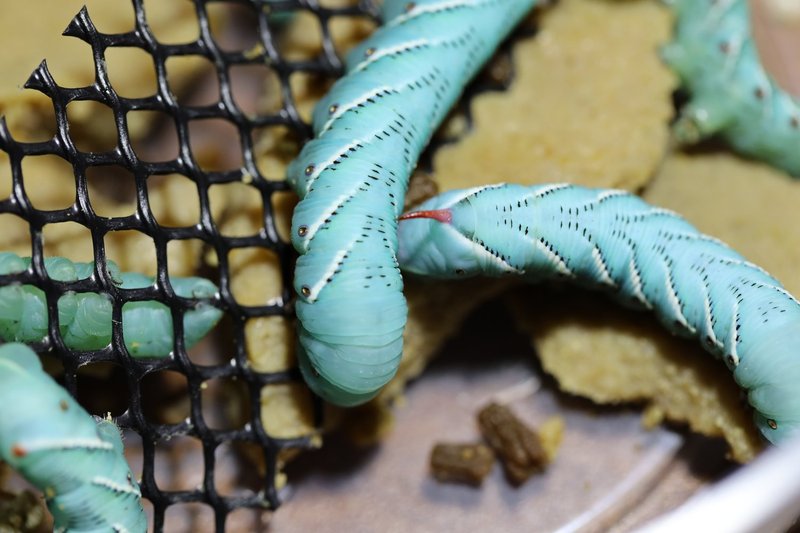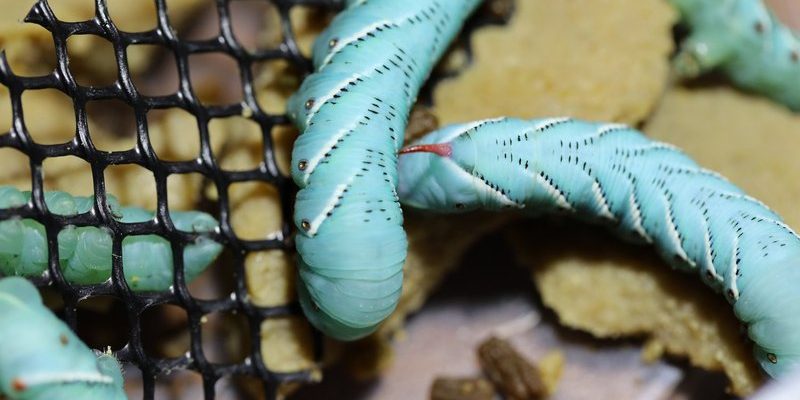
So, let’s say you’re sipping your coffee and wondering how to care for these squishy critters. It’s easier than you might think! Whether you’re new to raising insects or simply looking to add some variety to your pet’s diet, this guide will walk you through everything you need to know about hornworms — from care and feeding to keeping them healthy and thriving.
What Are Hornworms?
Hornworms are the larval stage of the moth species known as the Five-spotted Hawk Moth. These cute little munchers come in various hues, but the most common variety you’ll encounter for feeding is the green hornworm, or *Manduca sexta*. They can grow up to 4 inches long and are known for their distinctive horn-like protrusion on their rear, which gives them their name.
In the wild, these caterpillars primarily feast on tomato plants and other nightshades, but as a feeder insect, they are typically bred in controlled conditions. They’re soft-bodied, making them easy for pets to eat, and they’re chock-full of nutrients. This makes them a popular choice for anyone looking to provide their reptiles, amphibians, or even birds with a healthy snack.
Many enthusiasts enjoy raising hornworms because they grow quickly and don’t take much space. This makes them a fantastic option for anyone interested in incorporating feeder insects into their pet care routine without a lot of fuss.
Setting Up the Habitat
Creating a suitable habitat for your hornworms is crucial for their development. You’ll want to start with a container that allows for proper airflow — a ventilated plastic tub or a small aquarium can work perfectly. Good airflow helps prevent mold and keeps your hornworms healthy.
It’s also vital to keep the temperature consistent. Hornworms thrive in temperatures between 75°F and 85°F (around 24°C to 29°C). You can achieve this by placing the container in a warm area of your home or by using a heat mat if it gets too chilly. Just make sure to monitor the temperature with a thermometer to avoid overheating, which can lead to stress or death.
For bedding, using a layer of paper towels or newspaper on the bottom will help absorb moisture and make cleanup easier. Hornworms prefer a slightly humid environment, so misting the container lightly every few days can keep them comfortable without making it too wet.
Feeding Your Hornworms
Feeding hornworms is one of the more enjoyable parts of raising them. As previously mentioned, these caterpillars love to munch on plant matter. The best food for them is a specially formulated hornworm diet, which you can find in pet supply stores or online. This diet is rich in the nutrients they need for growth.
If you want a DIY approach, you can also feed them fresh leaves from tomato plants, pepper plants, or even some commercial greens. Just be sure to wash the leaves thoroughly before feeding them to prevent any pesticides from harming your hornworms.
Here’s a simple feeding schedule:
- Feed them fresh food every 2-3 days.
- Remove any uneaten food to prevent mold.
- Ensure they always have access to clean water.
Hornworms can eat a lot, so don’t be surprised if you find them growing rapidly. You might even notice them shedding their skin multiple times as they grow!
Common Problems and Solutions
Even though raising hornworms can be simple, you might run into a few bumps along the way. One common issue is mold developing in their habitat. If you notice mold, it’s important to clean the enclosure right away to keep your hornworms safe. Just remove any contaminated bedding and food, and replace them with fresh materials.
Another problem could be overcrowding. Hornworms like to have space, and if they’re too packed in, they may become stressed and even cannibalistic. If you notice them fighting or eating each other, it might be time to move some to a separate container.
Also, keep an eye out for health indicators. If your hornworms are not growing or are turning a brownish color, there might be a problem with temperature, humidity, or food. Making adjustments as needed will help keep your hornworms healthy and thriving.
Harvesting Your Hornworms
Once your hornworms reach about 3 to 4 inches long, they’re ready to be harvested. It’s crucial to handle them gently to avoid stressing them out. Simply take them out of their habitat and place them in a container for feeding your pets.
If you’re raising them in larger numbers and want to ensure a steady supply, consider staggering your hatching times. This way, you can continuously have hornworms at different stages of growth, ensuring there’s always something fresh for your pets.
Remember, timing is everything! Feeding your pets with hornworms that are too small won’t provide the right nutrients, while waiting too long can lead to pupation. If you’re not in a rush, you can let some hornworms metamorphose into moths, which can be a fun and educational experience too!
Raising hornworms as feeder insects can be a fun and fulfilling experience. It offers a unique way to connect with the food sources for your pets while providing them with nutritious meals. By setting up a proper habitat, ensuring the right food, and being aware of common issues, you can create a thriving environment for your hornworms.
As you embark on this little journey, remember the importance of patience and observation. Each step you take in caring for these green critters not only benefits them but also enriches your bond with your pets. Happy raising!

